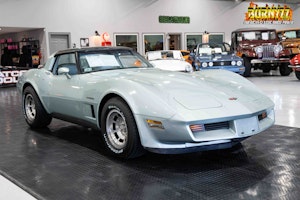Media | Articles
Turbofan wheels do more than just look good
In terms of ‘70s/’80s racing ephemera, turbofan wheels are rare air. Turbofan wheels, named after the jet engine, were conceived as an aerodynamic boon. But they also evoke a big, badass, old-school retro look made famous by Porsches and turbo BMWs from IMSA GT and FIA Group 5, huge-winged Skylines in Japan’s Super Silhouette series (complete with gold BBS logos and etched mesh patterns) or even the menacing coal-black discs on the Lancia Delta S4.
Penske’s Can-Am-conquering 917/30 had color-matched turbofans, yellow and blue, adding more menace to a 1600-horsepower wedge. Even the prototype Porsche 959 rocked turbofans. And into the end of the ‘80s, the Audi 200 Quattro dominated the 1988 Trans-Am season all while rocking eerily sparse turbofan covers, emblazoned Audi-BBS. Was it the wheels? It might not be the wheels. But it was most certainly because of the wheels.
How turbofans to work
20190102213910)
Managing tire and brake temperatures on a racecar is an exact science. Both need to be kept warm without getting too hot. As modern disc brakes grew larger, more complex (vented, slotted), and more powerful, overheating became an issue. Good brakes are the difference between victory and an inglorious crash into a tire barrier. And with brakes, the right temperature is key: Cold brakes can’t stop as effectively, hot brakes lead to fading, and overheated brakes are downright dangerous. But getting tires and brakes up to operating temperature quickly is also necessary, especially in qualifying, where time is a constraint.
Turbofan wheels work to passively pump air inside the wheel toward the brakes. The outside covers direct fresh cooler air inward. Perpendicular louvers underneath the cover guide the air directly at the brake rotors. Ambient air moves faster over the outside cover than the hot air inside, and the low pressure generated by the outside air draws the hot air out.
Marketplace
Buy and sell classics with confidence
Turbofans on production cars
20190102213902)
On the civilian front, two cars come to mind so-equipped. It’s hard to imagine how dazzling the C4 Corvette was when it launched in 1984, but compared to its 14-year-old predecessor, the C4 was a radical touch of the future—and its two-tone turbine wheels were part of the look. Some dared to nickname them “salad shooters,” belittling their functional greatness. And BMW’s E34 M5 came with two-piece turbines: the M-System wheels came with a hidden five-spoke aluminum alloy wheel underneath a magnesium cover that BMW called a “blower.” Brakes ran 25 percent cooler with the system, according to brochures, which also touted the 5 Series’s “largest brakes in their class.”
Eventually, turbofan wheels were banned by most racing series, deemed “moveable aerodynamic devices.” Rumor has it that some wheels were designed to evacuate air from the entire bottom of the car, thereby increasing downforce. The two-piece wheels were heavier than spoked wheels. It also turns out that turbofans weren’t as efficient at drawing away the hot air inside, and the excess heat tended to transfer toward the tires.
20190102213906)
Either way, the old and bulky turbofans evolved from giant plate covers into subtle five-spoke wheels, without the fussiness or multi-piece fragility, but equally capable at channeling cool air—drawing air away from the brakes. Think Porsche’s famed Turbo Twists: a staple of the 996-generation 911 set. Even the C4 Corvette received toned-down twists upon its facelift.
And for a while the aftermarket went hot on turbofan wheels. Back in the day, if you already had a set of gold basket-weave BBS wheels, the company could sell you a set of its RS covers to match. You’d have the hottest Porsche 930 Turbo on the block. Today, similar one-piece wheels have replicated the look among the tuner set: white OZ or Tom’s Racing wheels command high prices, while Ronal Turbos have ended up on everything from Honda CRXs to graffitied Skodas to camper-topped Saab 99s.
The C4 Corvette turbine wheels are big with the Volkswagen crowd, which is fitting, since Volkswagen enthusiasts are seemingly the masters of wheel swappage, to the ire of the anointed. Ask nicely enough and a brash throwback company in Belgium (motto: “CUSTOM F****** EVERYTHING”) will custom fabricate you a set.
The turbofan legacy
20190102213917)
Today, with the rising popularity of Radwood-esque ‘80s nostalgia, it’s no surprise that turbofan wheels are part of the look, alongside Blaupunkts and box flares. Just ask this Audi R8, if it could talk. Or this BMW “clownshoe.” They’re not for everyone. Turbofan wheels are heavy, expensive, hard to find, and dubiously effective at speeds under 85 to 150 mph. But it’s a hell of a style statement.
20190102213858)









